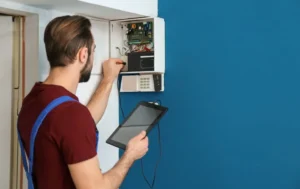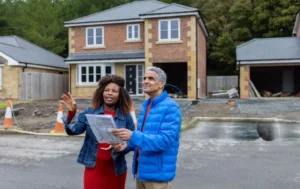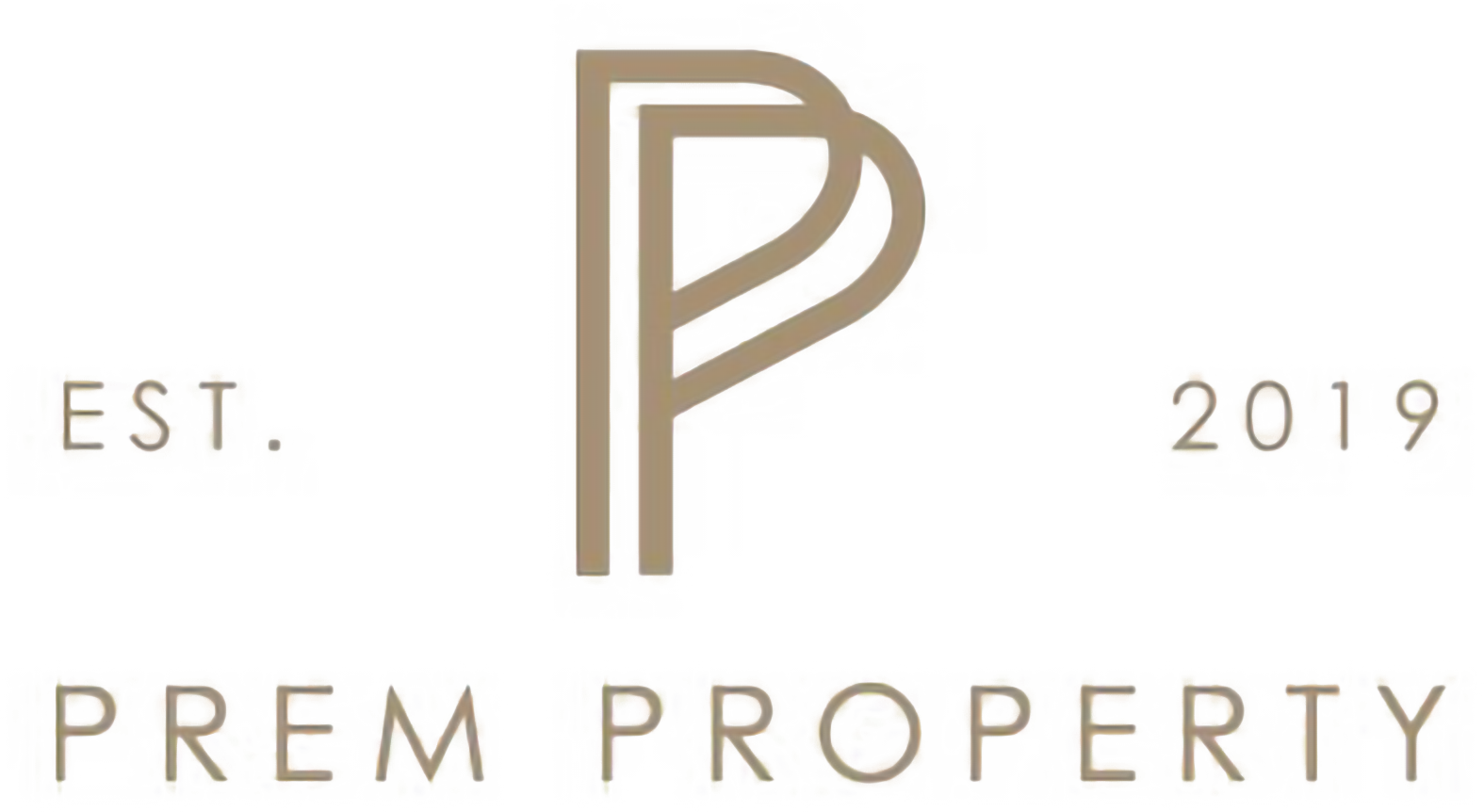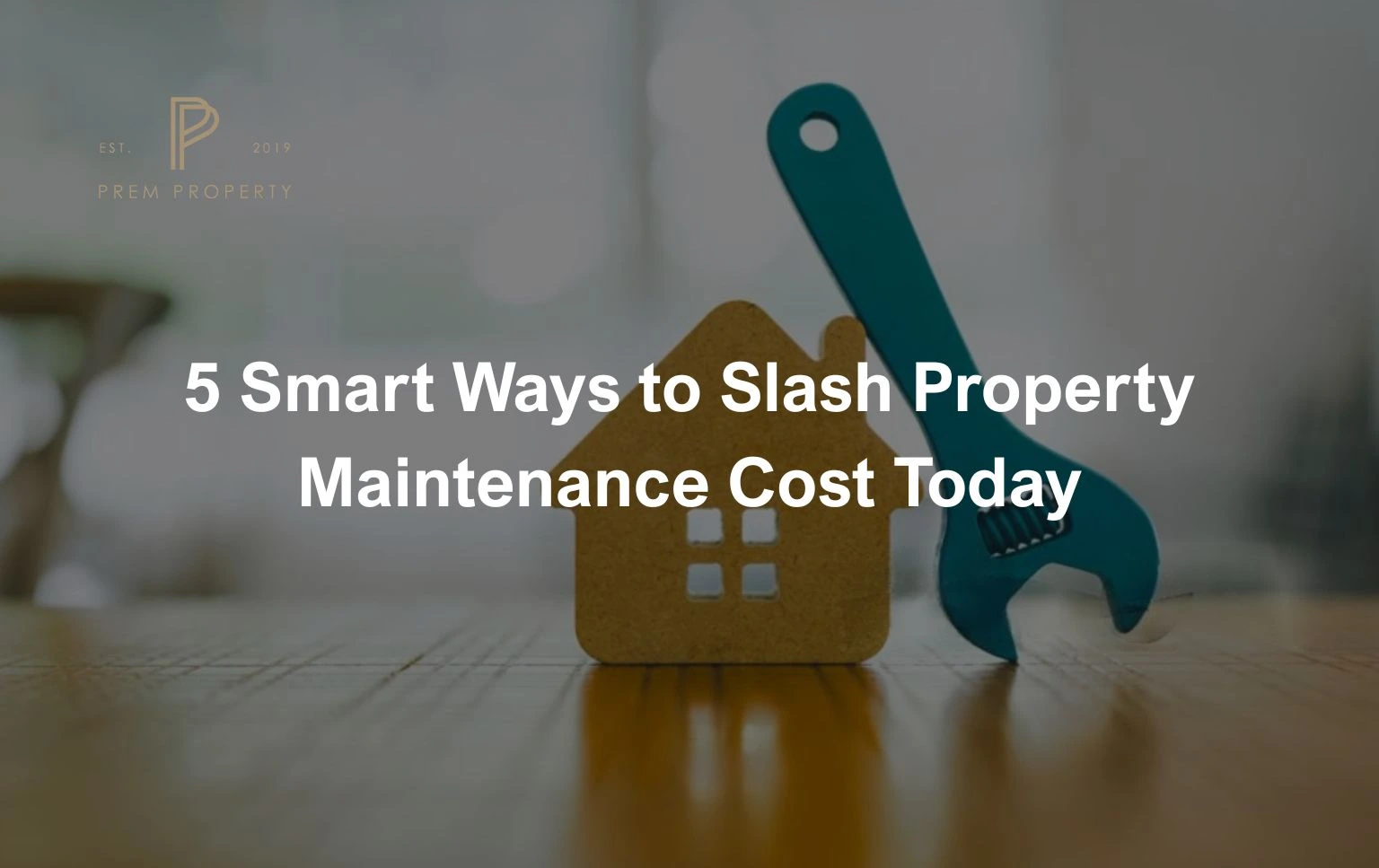Property ownership in the United Kingdom presents landlords with a mounting financial challenge that threatens their rental income stability. The escalating property maintenance cost burden has reached unprecedented levels, with average annual expenses now exceeding £1,374 for UK landlords—representing a staggering 26.24% increase since 2022. This dramatic rise in upkeep expenditure, combined with unpredictable void periods and tenant arrears, has pushed many property owners to seek innovative solutions that protect their investment whilst ensuring consistent cash flow.
For landlords managing portfolios that include supported living, temporary housing, supported accommodation, and residential care homes serving both adults and children, the property maintenance cost challenge becomes even more complex. These specialist properties require heightened attention to compliance, safety standards, and continuous upkeep, making traditional letting arrangements increasingly impractical. Guaranteed rent solutions have emerged as a transformative approach, offering landlords predictable income streams whilst transferring the burden of day-to-day maintenance responsibilities to experienced property management companies.
Understanding the Property Maintenance Cost Crisis
The financial landscape for UK landlords has fundamentally shifted over recent years. According to research from Towergate Direct, property maintenance costs have surged dramatically across all regions, with Edinburgh landlords facing the highest annual expenses at £2,952, followed by Newcastle at £1,632 and Glasgow at £1,622. These figures represent far more than routine upkeep—they encompass emergency repairs, compliance requirements, and the unpredictable nature of property deterioration.
The property maintenance cost equation extends beyond simple repairs. A comprehensive analysis by Halifax bank revealed that detached homeowners face average annual maintenance expenditure of £1,250, whilst terraced properties require approximately £950 yearly. However, these baseline figures pale in comparison to the actual costs landlords encounter when managing rental properties. The true financial burden includes boiler replacements averaging £370, structural repairs at £313, and flooring restoration at £322 annually per landlord.
Government data from HMRC demonstrates the scale of this challenge across the sector. In the 2023-2024 tax year, 66.2% of unincorporated landlords declared repairs and maintenance expenses, making it one of the most commonly reported cost categories. The total household spending on dwelling maintenance reached approximately £3.8 billion in 2021, reflecting a steady increase from 2010 onwards.
The property maintenance cost burden disproportionately affects older properties. Research indicates that buildings constructed before 1900 generate average annual maintenance expenses of £2,800—nearly double the £1,500 annual cost for properties less than 20 years old. This age-related deterioration creates particular challenges for landlords who own period properties or converted buildings now serving as supported accommodation or residential care facilities.

The Shocking Reality of Hidden Property Maintenance Costs
Beyond routine repairs, landlords face escalating damage repair costs that have skyrocketed by 121% between 2022 and 2024, rising from £473 to £1,043 annually. Theft damage represents the most expensive repair category at £1,128 per year, particularly affecting properties in Southampton, Leeds, and Liverpool. Fire damage emerges as the second costliest issue, whilst heatwave-related damage increasingly concerns property owners as climate patterns shift.
The property maintenance cost crisis extends into attempted cost-saving measures that often backfire catastrophically. Research reveals that 53% of UK landlords attempt DIY repairs, yet 43% regret these decisions due to poor results, additional damage, or tenant complaints. Alarmingly, 46% of landlords who attempted self-repairs subsequently hired professionals to rectify the work, often at significantly higher expense than the original repair would have cost.
Material costs and labour shortages continue driving property maintenance cost inflation relentlessly. Construction cost inflation peaked at 10.4% in May 2022, according to the Office for National Statistics, following Brexit-related tariffs on European materials, pandemic-induced supply chain disruptions, and the unexpected building boom that caught suppliers unprepared. These factors compound to create a perfect storm of rising expenses that show no signs of abating.
For specialist accommodation types, property maintenance costs multiply substantially. Supported living properties require adaptations, enhanced safety features, and continuous compliance with Care Quality Commission standards when providing personal care services. Temporary accommodation must meet stringent local authority requirements, whilst residential care homes face the most demanding maintenance obligations, ensuring safe environments for vulnerable adults and children.
Guaranteed Rent: The Revolutionary Solution to Property Maintenance Cost
Guaranteed rent represents a contractual arrangement where property management companies commit to paying landlords a fixed monthly rental income regardless of occupancy status or tenant payment issues. Unlike traditional letting arrangements where landlords bear the full financial risk of void periods, arrears, and maintenance emergencies, guaranteed rent solutions transfer these uncertainties to experienced property management specialists.
The fundamental distinction between conventional letting and guaranteed rent lies in risk distribution. Traditional lettings require landlords to source tenants, manage relationships, collect rent, coordinate repairs, and absorb financial losses during vacant periods. Guaranteed rent providers assume these responsibilities, offering landlords a predictable monthly payment that continues even when properties remain empty or tenants fail to meet payment obligations.
Prem Property, a leading guaranteed rent solution provider in the UK, exemplifies this transformative approach. By offering landlords fixed monthly payments backed by comprehensive property management services, companies like Prem Property enable property owners to enjoy passive income streams whilst specialist teams handle tenant sourcing, maintenance coordination, compliance management, and all day-to-day operational challenges.
The guaranteed rent model proves particularly valuable for landlords managing supported living accommodation, where residents require ongoing care services alongside their housing. These properties demand enhanced maintenance attention, specialist adaptations, and rigorous compliance with housing and care regulations. Guaranteed rent providers possess the expertise and infrastructure to manage these complex requirements effectively, ensuring properties meet all necessary standards whilst landlords receive consistent income.
How Guaranteed Rent Eliminates Property Maintenance Cost Nightmares
The relationship between property maintenance cost and guaranteed rent solutions centres on risk transfer and professional management efficiency. When landlords enter guaranteed rent agreements, the provider typically assumes responsibility for routine maintenance, repairs, and property upkeep throughout the contract term. This arrangement fundamentally alters the landlord’s financial exposure to unexpected repair expenses.
Guaranteed rent agreements typically specify maintenance responsibilities clearly within the contract terms. Most arrangements allocate day-to-day repairs, tenant-related damage, and routine upkeep to the guaranteed rent provider, whilst structural issues and major capital improvements remain the landlord’s responsibility. This division ensures properties maintain appropriate standards whilst protecting landlords from the unpredictable property maintenance cost fluctuations that plague traditional lettings.
The financial benefits extend beyond transferred repair costs. Research from Help Me Fix found that maintenance costs account for more than one-fifth of average rental income in traditional lettings. Over a typical nine-year ownership period, landlords spend approximately £34,000 on an average of 72 maintenance and repair tasks. Guaranteed rent arrangements eliminate this unpredictable cash flow drain, replacing it with fixed monthly income that enables accurate financial planning.
For supported accommodation properties serving vulnerable populations, property maintenance cost management becomes critically important. These properties must meet enhanced safety standards, accessibility requirements, and ongoing compliance obligations. Guaranteed rent providers specialising in supported living, temporary accommodation, and residential care homes possess the specialist knowledge and established contractor networks necessary to maintain these properties cost-effectively whilst ensuring regulatory compliance.

Supported Living: Managing Property Maintenance Cost Effectively
Supported living accommodation represents a rapidly growing sector within UK housing, providing approximately 600,000 vulnerable adults with environments enabling independent living alongside necessary support services. These properties require specialist adaptations, enhanced safety features, and continuous maintenance to meet residents’ needs whilst satisfying regulatory requirements.
The property maintenance cost for supported living facilities significantly exceeds standard residential properties. Adaptations enabling residents with physical disabilities, learning difficulties, or mental health conditions to live independently require ongoing maintenance. Equipment such as hoists, accessible bathrooms, and specialist safety features demands regular inspection and servicing, creating additional expense layers beyond routine property upkeep.
Guaranteed rent solutions prove particularly effective for supported living properties because specialist providers understand these enhanced requirements. Social Registered Providers and property management companies focusing on supported accommodation possess established relationships with contractors qualified to maintain specialist equipment and adaptations. This expertise ensures properties remain compliant with housing and care standards whilst minimising costly emergency repairs resulting from inadequate maintenance.
The financial model for supported living often involves inflation-linked rent agreements that provide landlords with protection against rising property maintenance costs. These arrangements typically include annual rent increases tied to the Consumer Price Index, ensuring landlord income keeps pace with inflation-driven cost increases. Combined with professional maintenance management, this creates sustainable long-term arrangements benefiting both property owners and service providers.
Temporary Accommodation: The Property Maintenance Cost Challenge
Temporary accommodation represents one of the most financially challenging sectors within UK housing. Local authorities spent £2.3 billion on temporary accommodation between April 2023 and March 2024, representing a 97% increase over five years. This expenditure reflects both the growing homelessness crisis and the escalating property maintenance cost burden facing councils.
The property maintenance cost challenge for temporary accommodation stems from multiple factors. Properties used for emergency housing experience higher wear rates due to frequent tenancy turnover, shorter occupancy periods, and the transient nature of residents facing housing crises. Local authorities struggle to maintain these properties adequately whilst managing constrained budgets, creating a maintenance backlog that increases long-term repair expenses.
Guaranteed rent arrangements offer local authorities and private landlords an alternative approach to temporary accommodation provision. By partnering with guaranteed rent providers, property owners receive consistent income whilst specialist companies manage properties, coordinate maintenance, and ensure compliance with local authority standards. This arrangement proves particularly valuable given the £737.3 million subsidy gap between housing benefit payments and actual temporary accommodation costs over the past five years.
The temporary accommodation sector demonstrates how property maintenance cost escalation threatens financial sustainability. In London, monthly spending on temporary accommodation reached £90 million, with boroughs forecast to overspend homelessness budgets by at least £150 million annually. Hotels used for emergency housing average £2,000 monthly—more than four times the reimbursable rate for one-bedroom accommodation—creating unsustainable financial pressures that guaranteed rent solutions can help address.
Supported Accommodation for Young People: Property Maintenance Cost Realities
Supported accommodation serving 16-18 year olds and vulnerable young people represents another specialist sector where property maintenance cost and guaranteed rent solutions intersect powerfully. Following legislative changes in October 2023, these properties face enhanced regulatory requirements, with average weekly placement costs reaching £3,324 for independent supported accommodation.
The property maintenance cost for young people’s supported accommodation includes both standard upkeep and specialist requirements ensuring safe environments for vulnerable residents. Properties must meet enhanced safety standards, provide appropriate communal facilities, and maintain features supporting young people’s transition to independent living. These requirements create ongoing maintenance obligations exceeding standard residential properties.
Guaranteed rent providers specialising in supported accommodation for young people understand these enhanced requirements comprehensively. They maintain properties meeting local authority commissioning standards whilst managing the complex regulatory landscape governing accommodation for under-18s. This expertise proves invaluable for landlords seeking to participate in this sector without assuming the specialist knowledge burden and ongoing property maintenance cost risks.
The financial sustainability of supported accommodation for young people depends upon effective property maintenance cost management. With local authorities facing budget constraints and scrutinising every placement expense, guaranteed rent arrangements offering predictable costs and professional property management enable sustainable provision of this essential accommodation type.
Residential Care Homes: Conquering Extreme Property Maintenance Costs
Residential care homes serving both adults and children represent the most demanding property type regarding maintenance requirements and regulatory compliance. These facilities must meet stringent safety standards, maintain specialist equipment, and ensure continuous operational readiness to protect vulnerable residents’ wellbeing.
The property maintenance cost for residential care homes encompasses routine building maintenance, specialist medical equipment servicing, safety system testing, and compliance-related improvements. Average weekly care home costs range from £1,291 for residential care to £1,410 for nursing care, with a significant portion allocated to maintaining safe, compliant facilities.
For children’s residential care, maintenance requirements prove even more stringent. Properties must provide safe, nurturing environments meeting Ofsted standards whilst accommodating young people’s developmental needs. The property maintenance cost burden includes creating age-appropriate facilities, maintaining recreational spaces, and ensuring continuous compliance with children’s residential care regulations.
Guaranteed rent solutions for residential care properties require specialist providers understanding these complex requirements thoroughly. Companies like Prem Property that focus on care home accommodation recognise the enhanced property maintenance cost obligations and structure agreements accordingly. These arrangements typically specify clear maintenance responsibility divisions, ensuring properties maintain necessary standards whilst providing landlords with predictable income streams.
The care home sector demonstrates how effective property maintenance cost management enables sustainable provision of essential services. With local authority funding constraints and increasing resident needs driving sector pressures, guaranteed rent arrangements offering professional property management prove invaluable for landlords committed to this vital sector.

Financial Analysis: Property Maintenance Cost Versus Guaranteed Rent Income
The financial comparison between traditional lettings and guaranteed rent solutions centres on predictability versus potential returns. Traditional lettings offer landlords the possibility of higher rental income but expose them to property maintenance cost volatility, void periods, and tenant arrears risks. Guaranteed rent arrangements provide lower but consistent income whilst eliminating these financial uncertainties.
Consider a landlord owning a three-bedroom property suitable for supported living. Under traditional letting arrangements, market rent might achieve £1,500 monthly, generating £18,000 annually. However, this gross income faces multiple deductions: letting agent fees (10-15%), maintenance costs averaging £1,374 annually (potentially higher for older properties), void periods averaging 3-4 weeks annually, and potential arrears. The net income might realistically fall to £14,000-£15,000 annually with significant cash flow unpredictability.
Under a guaranteed rent arrangement, the same landlord might receive £1,200 monthly (£14,400 annually) with no void periods, no maintenance cost exposure for routine repairs, and no letting fees. The guaranteed income arrives consistently regardless of occupancy, creating reliable cash flow enabling accurate mortgage payment planning and investment decisions.
The property maintenance cost protection proves particularly valuable during economic uncertainty. Research shows that repair costs have increased 36% over five years, with damage repair costs surging 121% between 2022 and 2024. Guaranteed rent agreements insulate landlords from these escalating expenses, transferring cost inflation risk to providers with established contractor relationships and bulk purchasing power enabling cost-effective maintenance delivery.
For portfolio landlords managing multiple properties across different specialist sectors—supported living, temporary accommodation, and residential care homes—guaranteed rent solutions enable simplified financial management. Rather than tracking maintenance expenses, void periods, and rental income across numerous properties with varying tenancy arrangements, landlords receive consistent monthly payments from a single professional partner managing all properties comprehensively.
Selecting the Perfect Guaranteed Rent Provider for Property Maintenance Cost Management
Choosing an appropriate guaranteed rent provider requires careful evaluation of several critical factors. The company’s reputation, financial stability, and sector experience determine whether the arrangement delivers promised benefits or creates additional complications. Landlords should research providers thoroughly, examining reviews, requesting references from existing clients, and verifying the company’s track record managing similar property types.
Contract terms require meticulous scrutiny, particularly regarding maintenance responsibilities, property condition requirements, and termination provisions. Landlords must understand precisely which repairs the provider covers, what property maintenance cost obligations remain their responsibility, and how the agreement addresses major structural issues or capital improvements. Hidden fees, early termination penalties, and property return condition requirements warrant particular attention.
For specialist property types—supported living, temporary accommodation, and residential care homes—provider expertise becomes paramount. Companies like Prem Property that specialise in guaranteed rent for supported accommodation possess the regulatory knowledge, contractor networks, and operational systems necessary to manage these complex properties effectively. Generalist guaranteed rent providers may lack the specialist expertise these property types demand, potentially creating compliance risks or inadequate property maintenance.
Financial strength indicators help assess provider reliability significantly. Landlords should verify the company’s ability to maintain guaranteed payments during economic downturns or property vacancy periods. Established providers with proven track records and strong financial positions offer greater security than newer entrants or undercapitalised operations that might struggle fulfilling contractual obligations during challenging market conditions.
The guaranteed rent contract length merits careful consideration. Agreements typically range from one to five years, with longer terms providing greater income security but reduced flexibility. Landlords must balance their desire for long-term stability against potential future plans for properties, market condition changes, or the possibility that guaranteed rent arrangements might become less advantageous over extended periods.
Regulatory Compliance and Property Maintenance Cost Obligations
The regulatory landscape governing rental properties significantly impacts property maintenance cost obligations. Landlords face increasingly stringent requirements regarding electrical safety, gas safety, energy efficiency, and fire safety. Non-compliance creates substantial financial and legal risks, whilst ensuring compliance generates ongoing inspection, testing and certification expenses.
Guaranteed rent providers managing compliance obligations offer landlords valuable protection against regulatory breaches. Professional property management companies maintain compliance calendars, schedule required inspections, and ensure properties meet all statutory requirements. This systematic approach prevents costly emergency compliance work and protects landlords from penalties resulting from regulatory oversights.
For supported living and residential care properties, compliance requirements multiply substantially. These facilities must satisfy housing standards alongside care-specific regulations enforced by the Care Quality Commission in England. Properties must meet enhanced fire safety standards, maintain appropriate accessibility features, and ensure environments suitable for vulnerable residents. The property maintenance cost of maintaining compliance in these sectors significantly exceeds standard residential lettings.
Temporary accommodation faces distinct compliance challenges, particularly regarding fitness for habitation standards and local authority licensing requirements. Properties used for emergency housing must meet basic safety and habitability standards despite often serving households in crisis situations. Guaranteed rent providers specialising in temporary accommodation understand these requirements and maintain properties accordingly, protecting landlords from compliance-related financial and reputational risks.
The upcoming regulatory changes under the Renters’ Rights Bill will further increase property maintenance cost obligations dramatically. Enhanced tenant protection measures, stricter property standards, and increased enforcement powers will require landlords to invest more heavily in property maintenance and compliance. Guaranteed rent arrangements offering professional compliance management will become increasingly attractive as regulatory burdens intensify.
The Future of Property Maintenance Cost and Guaranteed Rent Solutions
The trajectory of property maintenance cost in the UK points unequivocally upward. Multiple converging factors—aging housing stock, climate change impacts, enhanced regulatory requirements, and persistent construction cost inflation—ensure maintenance expenses will continue rising faster than general inflation. Landlords must adapt their business models to accommodate this new reality or risk financial unsustainability.
Guaranteed rent solutions represent one strategic response to escalating property maintenance cost challenges. As repair expenses and compliance obligations increase, the appeal of fixed monthly income with transferred maintenance responsibility grows correspondingly. The guaranteed rent sector will likely expand substantially as more landlords recognise the benefits of predictable income and professional property management.
Technology integration offers potential property maintenance cost mitigation strategies that guaranteed rent providers can leverage effectively. Predictive maintenance systems, remote property monitoring, and digital compliance tracking enable more efficient property management, potentially reducing reactive repair costs whilst ensuring continuous regulatory compliance. Providers investing in these technologies can deliver superior value to landlord clients whilst managing properties more cost-effectively.
The specialist accommodation sectors—supported living, temporary accommodation, and residential care homes—face particular property maintenance cost pressures driven by demographic trends. An aging population, increasing disability prevalence, and ongoing homelessness challenges ensure sustained demand for specialist housing requiring enhanced maintenance standards. Guaranteed rent providers focusing on these sectors will play increasingly vital roles connecting landlords with social housing needs.
Climate change adaptation will reshape property maintenance cost considerations over coming decades. Properties require resilience improvements protecting against increased flooding risk, overheating, and extreme weather events. Guaranteed rent providers managing properties long-term have incentives to invest in these adaptations, protecting asset values whilst reducing future repair costs from climate-related damage.
Why Prem Property Delivers Superior Property Maintenance Cost Solutions
Prem Property stands out amongst guaranteed rent providers through their comprehensive understanding of property maintenance cost challenges facing UK landlords. Their approach combines guaranteed monthly rental payments with professional property management services that eliminate the unpredictable financial burden of repairs, maintenance, and tenant-related issues.
Unlike traditional letting arrangements where landlords constantly worry about unexpected property maintenance costs, Prem Property assumes responsibility for routine repairs and upkeep throughout the contract term. This arrangement provides landlords with genuine peace of mind, knowing their properties remain well-maintained whilst they receive consistent monthly income regardless of occupancy status or tenant payment behaviour.
For landlords managing specialist properties—supported living accommodation, temporary housing, supported accommodation, and residential care homes—Prem Property’s expertise proves particularly valuable. They understand the enhanced property maintenance cost requirements these properties demand and possess the contractor networks and regulatory knowledge necessary to maintain facilities to appropriate standards whilst ensuring compliance with relevant regulations.
The Prem Property model addresses the fundamental property maintenance cost challenge facing modern landlords: unpredictability. By converting variable maintenance expenses into a predictable guaranteed rent arrangement, they enable landlords to plan finances accurately, eliminate emergency repair stress, and enjoy truly passive rental income without the operational headaches plaguing traditional lettings.

Transforming Your Property Maintenance Cost Burden into Passive Income
The decision to embrace guaranteed rent solutions represents a strategic shift in landlord mindset—moving from active property management with all its attendant property maintenance cost uncertainties to passive income generation with predictable returns. This transformation particularly benefits landlords seeking to simplify their property portfolios whilst maintaining consistent income streams.
Traditional property management demands constant attention: responding to tenant repair requests, coordinating contractors, managing emergencies, and absorbing unpredictable property maintenance costs that fluctuate wildly year-to-year. This operational burden consumes time, creates stress, and generates financial uncertainty that complicates long-term planning.
Guaranteed rent arrangements eliminate these challenges comprehensively. Landlords transfer day-to-day management responsibilities to specialist providers who handle tenant relationships, coordinate repairs, manage compliance, and ensure properties remain well-maintained. The landlord’s role simplifies to receiving monthly guaranteed payments and maintaining appropriate property insurance.
For landlords approaching retirement, managing properties alongside careers, or seeking to reduce stress whilst maintaining rental income, guaranteed rent solutions offer compelling benefits. The property maintenance cost burden transfers to experienced professionals with established systems, whilst landlords enjoy consistent passive income supporting their financial objectives without operational involvement.
Maximising Returns While Minimising Property Maintenance Cost Risks
Smart landlords recognise that maximising returns involves more than simply charging the highest possible rent—it requires balancing income against operational costs, risks, and time investment. Property maintenance cost volatility represents one of the most significant risks threatening rental property profitability, particularly as repair expenses continue escalating faster than rental income growth.
Guaranteed rent arrangements enable landlords to lock in predictable returns whilst eliminating property maintenance cost uncertainty. Although guaranteed rent typically pays slightly below market rates, the certainty of consistent income without void periods, arrears, or repair costs often delivers superior net returns compared to traditional lettings with their inherent unpredictability.
The risk reduction extends beyond finances. Landlords using guaranteed rent solutions avoid tenant disputes, eviction proceedings, property damage disputes, and the myriad complications arising from direct tenant management. This peace of mind carries significant value for landlords prioritising stable, stress-free property ownership over potentially higher but unpredictable returns.
For portfolio growth strategies, guaranteed rent arrangements enable more aggressive expansion. Predictable income streams facilitate mortgage applications, whilst eliminated property maintenance cost volatility improves cash flow stability. Landlords can confidently acquire additional properties knowing each generates consistent monthly income without requiring increased operational involvement.
Transitioning to Guaranteed Rent Property Maintenance Cost Solutions
Landlords considering guaranteed rent arrangements should begin by honestly assessing their current property management situation. Calculate total annual property maintenance costs over recent years, including routine repairs, emergency fixes, compliance expenses, and tenant-related damage. Factor in void periods, arrears, and letting agent fees to determine genuine net rental income.
Compare this actual net income against guaranteed rent offers from reputable providers like Prem Property. Whilst guaranteed rent percentages typically range from 75-90% of market rent, remember that this income arrives consistently without deductions for void periods, maintenance costs, or management fees. For many landlords, guaranteed rent delivers comparable or superior net returns with dramatically reduced stress and time investment.
Evaluate your property portfolio’s suitability for guaranteed rent. Properties in good condition suitable for supported living, temporary accommodation, or residential care typically command most interest from guaranteed rent providers. Specialist accommodation addresses critical social needs, ensuring consistent demand that supports long-term guaranteed rent arrangements.
Contact multiple guaranteed rent providers to understand available options. Request detailed contract terms, clarify maintenance responsibilities, and verify providers’ experience managing properties similar to yours. For specialist properties like supported living or residential care homes, prioritise providers with demonstrated expertise in these sectors and established relationships with local authorities and care providers.
Review contracts carefully with legal advisors before committing. Ensure you understand precisely which property maintenance cost obligations transfer to the provider and which remain your responsibility. Clarify contract length, termination provisions, rent review mechanisms, and property return conditions. Transparent contracts protecting both parties’ interests form the foundation of successful long-term guaranteed rent relationships.
Mastering Property Maintenance Cost Through Guaranteed Rent
The escalating property maintenance cost burden facing UK landlords demands strategic responses protecting rental income whilst ensuring property sustainability. Guaranteed rent solutions offer compelling benefits—predictable income, transferred maintenance risk, professional property management, and simplified financial planning—particularly valuable for landlords managing specialist accommodation types requiring enhanced maintenance standards.
For properties serving supported living residents, temporary accommodation occupants, or residential care home residents, guaranteed rent arrangements with specialist providers like Prem Property enable landlords to participate in these essential sectors without assuming overwhelming operational complexity and property maintenance cost volatility. These arrangements support the provision of much-needed specialist housing whilst protecting landlord investments and ensuring consistent returns.
The decision between traditional letting and guaranteed rent ultimately depends upon individual landlord circumstances, risk tolerance, and investment objectives. Landlords prioritising income stability, operational simplicity, and property maintenance cost certainty will find guaranteed rent solutions increasingly attractive as repair expenses continue their relentless upward trajectory.
As property maintenance costs continue escalating driven by aging housing stock, enhanced regulations, and persistent inflation, guaranteed rent solutions will likely capture growing market share. Forward-thinking landlords recognise these trends and adapt their strategies accordingly position themselves for sustainable long-term success, transforming troublesome property maintenance cost burdens into reliable passive income streams supporting their financial objectives.

